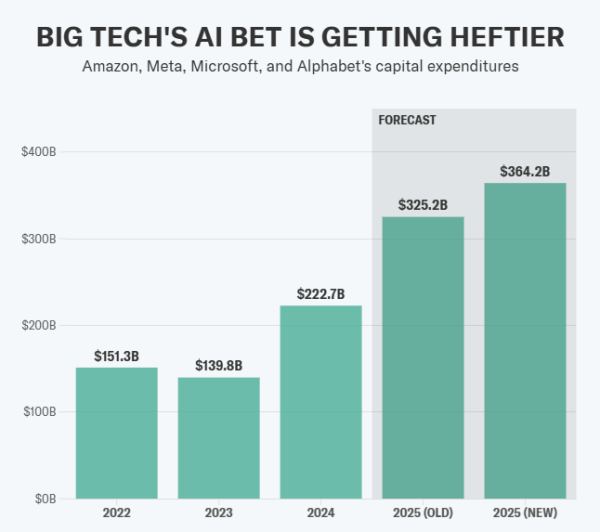In this edition of Basis Points, we discuss key differences between the current boom in Artificial Intelligence stocks and the Dot Com Bubble of the early 2000s.
Valuations
The recent run in the US share market has seen the S&P 500, (a key indicator of US market performance), soar to new highs again, with much of the gains in the index concentrated in the technology sector. Advancements in Artificial Intelligence (AI) promise productivity gains across industries, leading to elevated valuations in the sector.
The S&P 500 is now boasting a forward price-to-earnings ratio of ~23x. This measure of valuation now far surpasses its 20-year average of around 16x. The US tech sector is trading well beyond 23x. This has raised questions from investors about the sustainability of the elevated valuations in the US, with many comparing the current run in equities to the Dot Com Bubble of the late 1990s and early 2000s.
AI Boom vs Dot Com Bubble
During the Dot Com Bubble, many tech stocks were trading at multiples often exceeding 100x revenue (not earnings!). Many were not actually making any profit at all during the mania.
The main difference between the Dot Com Bubble and the current AI-related investment boom is the fact that leading US tech stocks like Nvidia and Microsoft are making enormous amounts of earnings and have strong free cash flows.
The Dot Com era was marked by speculative bets on unproven business models. Today, AI leaders are delivering real earnings. While inevitably some will fail, the current boom is a materially different situation to the Dot Com era.
Infrastructure & Capital Expenditure
Big Tech firms Amazon.com, Alphabet (Google), Microsoft, and Meta reported that they were set to spend as much as cumulative $364 billion USD in their respective 2025 fiscal years, driven by their investments in AI.
Not only is AI-related capital expenditure to continue expanding but we are beginning to see more deals among AI companies. Recently, Nvidia announced its $100 billion USD investment into OpenAI (creator of the popular ChatGPT AI platform). In turn, OpenAI announced its commitment to invest $300 billion USD into Oracle’s data centres.
While the elevated valuations of US tech companies give some cause for concern, the fact that these companies are generating robust earnings and making productive use of the associated free cash flow through further investments into the AI buildout should help to give investors’ confidence in the continued build out of AI infrastructure.

Our portfolios continue to benefit from the AI boom, with some of our key investment themes targeting Digitalisation & AI, Semiconductors & Networking, and Smart Infrastructure. However, we remain aware of risks going forward.
We continue to be diversified, across stocks and sectors, and also maintain positions in Emerging Markets, and more defensive sectors like Global Infrastructure, Healthcare Innovation and Consumer Staples. This should ensure the portfolios are risk-efficient, while still delivering long-term sustainable growth.
What we’re reading: This is less an AI 'bubble' and more of a 'boom' | World Economic Forum

